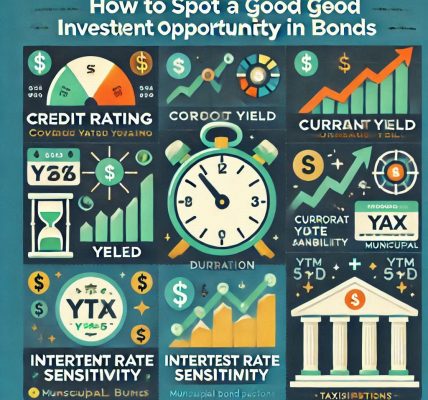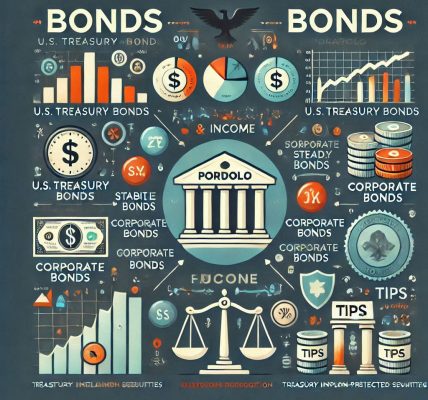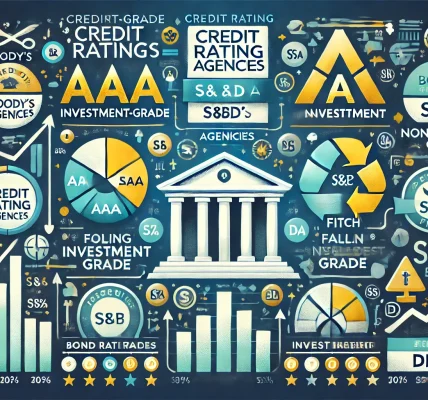As we look ahead to 2025, the world of corporate bonds is poised for significant transformation. With changing economic conditions, evolving market dynamics, and global shifts, corporate bonds will continue to be a core component of many investment portfolios. However, the landscape for corporate bonds will be shaped by key trends, risks, and opportunities that investors need to stay informed about.
In this blog, we’ll explore the future of corporate bonds in 2025, covering the factors that will impact their performance, the role they will play in diversified portfolios, and how investors can prepare to make the most of them.
What Are Corporate Bonds?
Before diving into the future, it’s essential to have a clear understanding of what corporate bonds are. Corporate bonds are debt securities issued by companies to raise capital. Investors who purchase these bonds are essentially lending money to the company in exchange for periodic interest payments (coupon payments) and the return of the principal amount when the bond matures.
Corporate bonds can vary in terms of credit quality, maturity, and risk. Investment-grade bonds are issued by financially stable companies, while high-yield (junk) bonds are offered by companies with lower credit ratings but higher yields.
Key Factors Shaping the Future of Corporate Bonds in 2025
Several economic, financial, and regulatory factors will influence the direction of corporate bonds in the near future. Here are some of the key trends to watch:
1. Interest Rates and Monetary Policy
One of the most significant factors impacting corporate bonds is interest rates. In 2025, we can expect the Federal Reserve and other central banks to continue adjusting interest rates based on economic conditions. If rates remain low, demand for bonds may increase as investors seek relatively safer returns.
However, if central banks decide to increase interest rates in response to inflationary pressures, bond prices could experience downward pressure. Rising interest rates typically lead to higher yields, which can make new bond issues more attractive but hurt the value of existing bonds.
Investor Tip: In 2025, investors should keep a close eye on central bank policies and interest rate changes to make informed decisions on bond investments.
2. Economic Growth and Corporate Health
The performance of corporate bonds is closely tied to the health of the issuing companies and the broader economy. As economies recover from the impacts of the COVID-19 pandemic, businesses are likely to experience varying levels of growth and profitability.
In 2025, companies in certain sectors, such as technology and renewable energy, may see strong growth, while industries like traditional retail or travel may face continued challenges. Companies that are financially stable and show strong earnings growth are more likely to issue investment-grade bonds, whereas weaker companies may rely on high-yield bonds to raise capital.
Investor Tip: Investors should focus on credit ratings and assess the financial health of bond issuers to mitigate risks.
3. Inflation Concerns and Its Impact on Corporate Bonds
Inflation is a key concern for investors in 2025. As global economies recover, inflation may start to rise, which can erode the purchasing power of fixed income returns. Corporate bonds, especially those with longer durations, may struggle to deliver real returns in high inflation environments.
However, companies with strong market positions, stable cash flows, and pricing power may be able to offset inflationary pressures. On the other hand, companies with weaker financials may find it difficult to maintain profitability during periods of high inflation, potentially leading to credit downgrades.
Investor Tip: Look for bonds from companies that are well-positioned to weather inflation, such as those with pricing power or strong market demand.
4. ESG and Sustainability Trends
Environmental, Social, and Governance (ESG) factors are becoming increasingly important in the world of corporate bonds. Investors are increasingly seeking bonds that align with their values and focus on sustainability, with many corporate issuers now issuing green or socially responsible bonds.
In 2025, the demand for ESG-compliant bonds will likely continue to rise as investors seek to put their money into companies that prioritize environmental sustainability, social responsibility, and good governance practices.
Investor Tip: Consider adding ESG-focused bonds to your portfolio if you’re interested in socially responsible investing.
5. The Rise of Digital Bonds and Blockchain Technology
As technology evolves, we are likely to see the rise of digital bonds and blockchain-based solutions in the corporate bond market. Digital bonds have the potential to reduce costs, increase transparency, and streamline the bond issuance process.
In 2025, we may see more corporate bonds being issued on blockchain platforms, enabling faster settlement times, lower fees, and enhanced security. Digital bonds could also appeal to a younger, tech-savvy investor demographic looking for more efficient ways to invest in fixed-income assets.
Investor Tip: Stay informed about emerging financial technologies, as digital bonds could offer attractive opportunities in the coming years.
The Role of Corporate Bonds in Your 2025 Portfolio
Corporate bonds will remain an essential part of many portfolios in 2025. They offer stability, diversification, and income generation, making them a valuable asset for investors looking to balance risk in their portfolios.
1. Balancing Risk and Reward
While stocks offer the potential for higher returns, they also come with higher risk. Corporate bonds, especially investment-grade bonds, provide more stability and less volatility, which can act as a counterbalance during market downturns.
2. Income Generation in a Low-Interest-Rate Environment
With interest rates expected to remain relatively low, corporate bonds can offer an attractive source of fixed income. Bonds with higher yields, such as high-yield corporate bonds, can provide higher returns compared to government bonds, making them appealing to income-focused investors.
3. Diversification
Incorporating a range of corporate bonds with varying maturities, credit ratings, and sectors can help diversify your portfolio and reduce risk. Bonds from different industries can protect your portfolio from sector-specific downturns, offering added stability.
How to Invest in Corporate Bonds in 2025
There are several ways to invest in corporate bonds in 2025:
- Individual Corporate Bonds: Investors can buy individual bonds directly from the market, offering control over the bond selection. However, this requires research and understanding of the bond issuer’s financial health.
- Bond Funds and ETFs: Corporate bond funds and exchange-traded funds (ETFs) offer a diversified approach to bond investing, with lower individual bond risk. These funds invest in a range of bonds, providing exposure to different companies and industries.
- Robo-Advisors: Some robo-advisors offer bond-focused portfolios, which automatically allocate a portion of your portfolio to bonds based on your risk profile.
Conclusion
The future of corporate bonds in 2025 will be shaped by several key factors, including interest rates, economic growth, inflation, and evolving trends like ESG investing and digital bonds. While challenges remain, corporate bonds will continue to offer a crucial role in diversified portfolios, providing stability, income, and diversification.
Investors looking to navigate this evolving landscape should stay informed, diversify their bond holdings, and consider new investment opportunities that align with emerging trends. By understanding these factors, investors can effectively incorporate corporate bonds into their strategies and potentially achieve better risk-adjusted returns in the years ahead.




